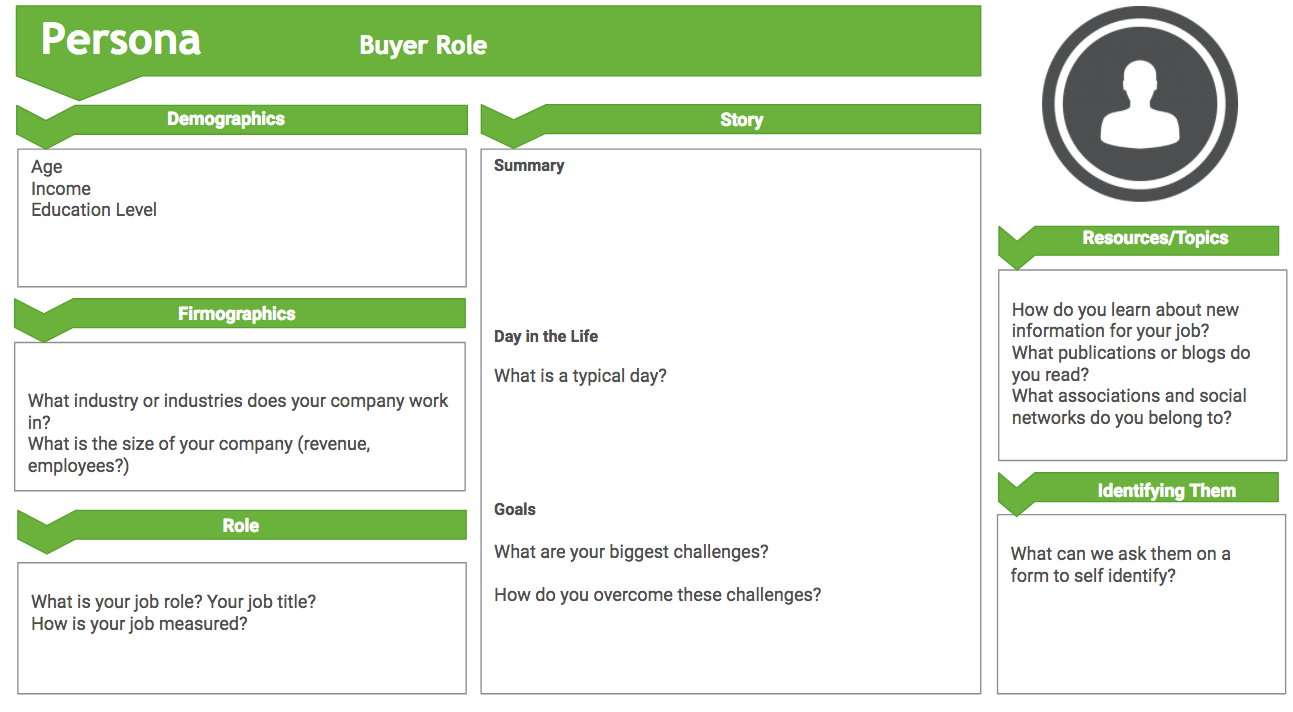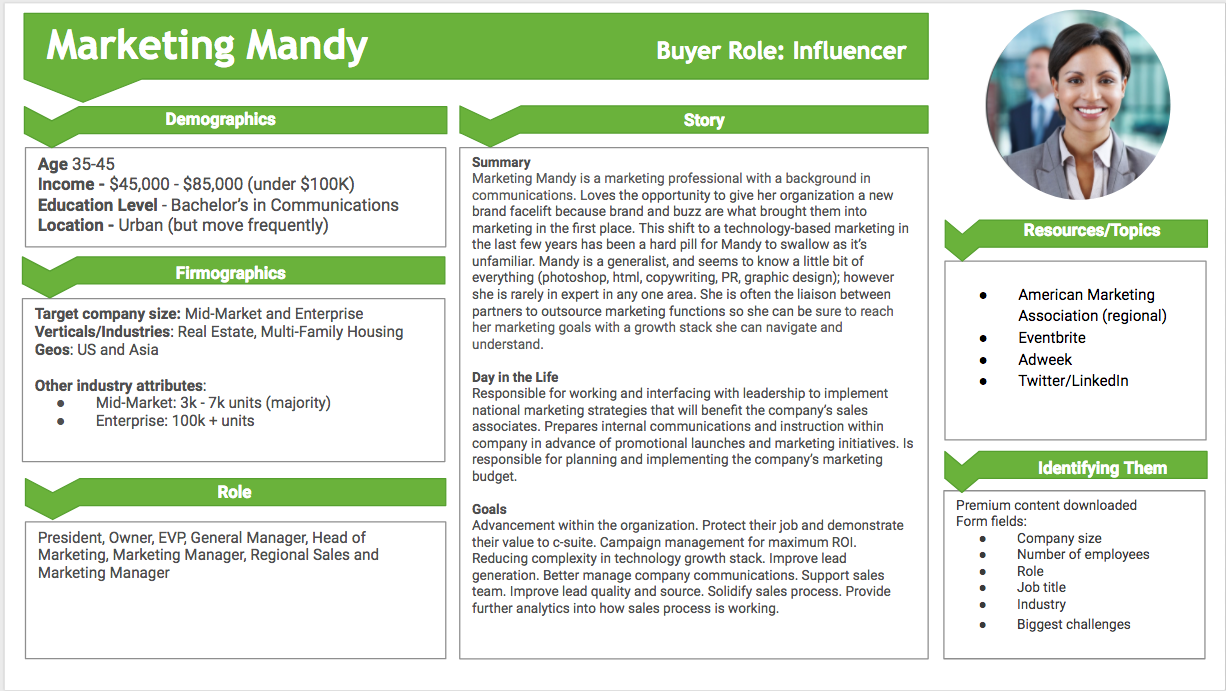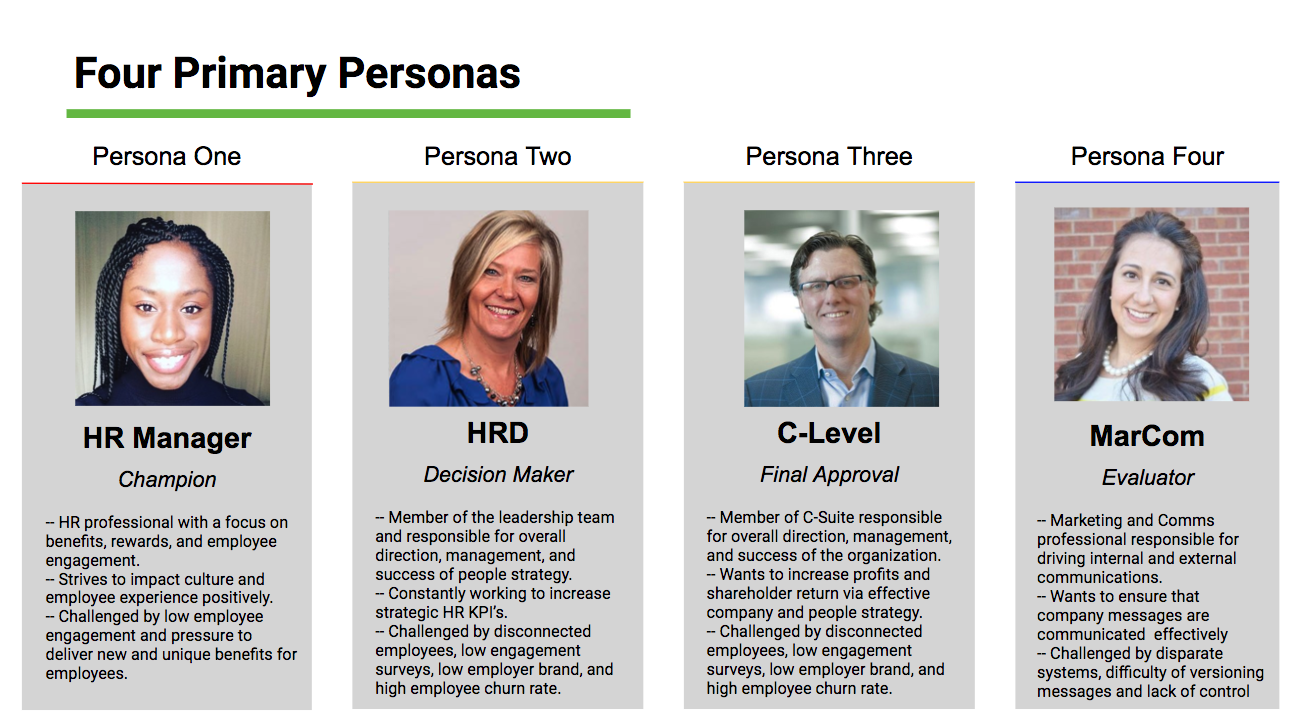6 Steps to Creating Accurate Buyer Personas
The success of all inbound marketing and sales efforts hinges on the development of accurate and informed buyer personas. To effectively capture, nurture and convert prospects into customers, it's essential to first understand who you're talking to, what drives their purchasing decisions, what their unique challenges are in relation to your product/services and what types of messaging they're most likely to respond to.
In the B2B model, buyer personas can be leveraged to tailor a sales pitch to specific individuals within an organization, to more effectively and organically capture the attention of qualified leads, to foster greater brand awareness and site traffic through persona-specific campaigns and to seamlessly usher leads down your sales funnel at key conversion points.
To help jump-start your persona development process, we've laid out our proven six-step guide to persona creation:
1. Ask the Right Questions
Developing accurate buyer personas begins with asking the right questions to guide your efforts. Which markets are you developing personas for? Which of your company's solutions align with these markets? What is your current value proposition? What features do your prospects care about most? What position do they occupy within their organization? What are their daily concerns and responsibilities?
By evaluating traits and characteristics of specific buyers or markets you've had success selling to, and identifying commonalities therein, you can begin to sketch out a few potential buyer personas.

2. Consult Sales and Marketing
Asking the right questions also means asking them of the right people. Your sales team should be able to shed light on the key pain points, daily responsibilities and purchasing concerns of target personas, pulled directly from their one-on-one sales interactions. Your marketing team, on the other hand, may be more likely to identify key firmographic and demographic trends of personas along with their preferred engagement channels or web habits. Both perspectives are important; having sales and marketing members present for a persona workshop will help ensure you're not missing key insights from either team.
3. Do Your Research
Oftentimes, persona development will require conducting research beyond what sales and marketing can provide from experience alone. A great way to develop personas (and confirm their accuracy) is to visit a recent customer's profile on LinkedIn and browse their company's website. LinkedIn can provide you with a more complete picture of the person who you're selling to. What is their job title? How long have they been at the company? What is their skillset and background? A company's website can serve as a great resource to help inform your assumptions about target industry, key motivators, company size, business model and company values, among other distinguishing factors.
4. Pay Attention to Firmographics as well as Demographics
For B2B companies, it's especially important to consider a target persona's demographics in tandem with their company's firmographics. Job titles can encompass different responsibilities depending on the size and annual revenue of an organization. For large, "enterprise level" organizations, someone at a VP or director level might hold considerable buying power and act as the primary point of contact. In small-to-medium-sized businesses, CEOs are usually much more directly involved in the sales process and will hold more buying influence. Knowing who your personas are within the context of their organization can give you a clearer understanding of their unique pain points and goals.

5. Focus on Perfecting Primary Personas
Best practice for persona development involves limiting yourself to three to four primary personas. While secondary personas are often brand champions and thus great sources of information, it's not likely that you'll be in contact with them on a regular basis — if at all — during the sales process. Primary personas are the ones responsible for initiating or sanctioning a purchasing decision and are most likely to be your point of contact throughout the sales process, so clearly defining these target audiences is key. After you've established solid primary personas, identifying negative personas — buyer personas who may look similar to your primary personas at first glance but don't properly align with your services and/or ideal industries — can help your sales team understand who to avoid during their outreach and enrichment efforts.

6. Go With Your Gut
Buyer personas should be developed from research and experience, but that doesn't mean you should ignore your gut. If it seems like a customer is an unlikely fit for your business, don't ignore your instincts. Not every customer will align perfectly with a single persona, but they should fit somewhere on your defined spectrum. If a prospect expresses interest in your company but doesn't appear like a great fit, it's worth examining further in order to avoid investing in a partnership that's not likely to provide adequate ROI for either party. Employ your best judgment when assigning new contacts into different persona groups, but don't force a fit simply to pad your contact base. Persona-based marketing is meant to garner greater results by focusing on lead quality over quantity, driving better (and more) sales conversions by nurturing connections with a specific (and limited) audience whose members are most likely to become customers. Don't be afraid to turn away prospects that aren't a good fit with any of your primary personas. You'll both be better off in the long term.
Interested in learning more about how buyer personas fit into the Inbound methodology? Check out our Ultimate Guide to Inbound Marketing below.





